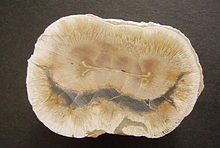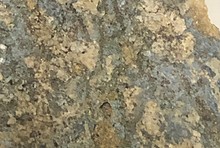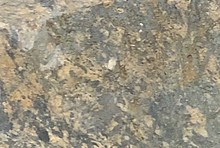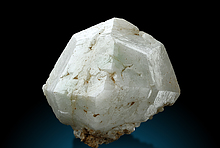Home PageAbout MindatThe Mindat ManualHistory of MindatCopyright StatusWho We AreContact UsAdvertise on Mindat
Donate to MindatCorporate SponsorshipSponsor a PageSponsored PagesMindat AdvertisersAdvertise on Mindat
Learning CenterWhat is a mineral?The most common minerals on earthInformation for EducatorsMindat ArticlesThe ElementsThe Rock H. Currier Digital LibraryGeologic Time
Minerals by PropertiesMinerals by ChemistryAdvanced Locality SearchRandom MineralRandom LocalitySearch by minIDLocalities Near MeSearch ArticlesSearch GlossaryMore Search Options
The Mindat ManualAdd a New PhotoRate PhotosLocality Edit ReportCoordinate Completion ReportAdd Glossary Item
Mining CompaniesStatisticsUsersMineral MuseumsClubs & OrganizationsMineral Shows & EventsThe Mindat DirectoryDevice SettingsThe Mineral Quiz
Photo SearchPhoto GalleriesSearch by ColorNew Photos TodayNew Photos YesterdayMembers' Photo GalleriesPast Photo of the Day GalleryPhotography
╳Discussions
💬 Home🔎 Search📅 LatestGroups
EducationOpen discussion area.Fakes & FraudsOpen discussion area.Field CollectingOpen discussion area.FossilsOpen discussion area.Gems and GemologyOpen discussion area.GeneralOpen discussion area.How to ContributeOpen discussion area.Identity HelpOpen discussion area.Improving Mindat.orgOpen discussion area.LocalitiesOpen discussion area.Lost and Stolen SpecimensOpen discussion area.MarketplaceOpen discussion area.MeteoritesOpen discussion area.Mindat ProductsOpen discussion area.Mineral ExchangesOpen discussion area.Mineral PhotographyOpen discussion area.Mineral ShowsOpen discussion area.Mineralogical ClassificationOpen discussion area.Mineralogy CourseOpen discussion area.MineralsOpen discussion area.Minerals and MuseumsOpen discussion area.PhotosOpen discussion area.Techniques for CollectorsOpen discussion area.The Rock H. Currier Digital LibraryOpen discussion area.UV MineralsOpen discussion area.Recent Images in Discussions
Identity HelpUlexite vs. Satin Spar Selenite

24th Oct 2003 18:04 UTCzimmjm
Thanks for your help.

26th Oct 2003 20:56 UTCRob Woodside

26th Oct 2003 22:35 UTCPeter Haas
Remove a bit of the material and grind it to a fine powder. Transfer the powder to a test tube and add some methanol (about twice the volume of the mineral powder), then add A FEW drops of concentrated sulfuric acid (pour it carefully down the wall of the tube). Mix well and heat over a flame. If the mixture boils, try to ignite the vapours escaping from the tube. If borate is present (ulexite), the vapours will burn with a green flame (volatile boric and boronic acid methyl esters). If sulfate (gypsum) is present, nothing happens.
There is no risk of a violent reaction - however, you must wear safety glasses. Also, since methanol is toxic upon inhalation, you must carry out the test in a ventilated room.
Regards
Peter

26th Oct 2003 22:38 UTCPeter Haas
Remove a bit of the material and grind it to a fine powder. Transfer the powder to a test tube and add some methanol (about twice the volume of the mineral powder), then add A FEW drops of concentrated sulfuric acid (pour it carefully down the wall of the tube). Mix well and heat over a flame. If the mixture boils, try to ignite the vapours escaping from the tube. If borate is present (ulexite), the vapours will burn with a green flame (volatile boric and boronic acid methyl esters). If sulfate (gypsum) is present, nothing happens.
There is no risk of a violent reaction - however, you must wear safety glasses. Also, since methanol is toxic upon inhalation, you must carry out the test in a ventilated room.
Regards
Peter

26th Oct 2003 22:38 UTCPeter Haas
Remove a bit of the material and grind it to a fine powder. Transfer the powder to a test tube and add some methanol (about twice the volume of the mineral powder), then add A FEW drops of concentrated sulfuric acid (pour it carefully down the wall of the tube). Mix well and heat over a flame. If the mixture boils, try to ignite the vapours escaping from the tube. If borate is present (ulexite), the vapours will burn with a green flame (volatile boric and boronic acid methyl esters). If sulfate (gypsum) is present, nothing happens.
There is no risk of a violent reaction - however, you must wear safety glasses. Also, since methanol is toxic upon inhalation, you must carry out the test in a ventilated room.
Regards
Peter

27th Oct 2003 14:18 UTCbill

27th Oct 2003 14:21 UTCbill




Mindat.org is an outreach project of the Hudson Institute of Mineralogy, a 501(c)(3) not-for-profit organization.
Copyright © mindat.org and the Hudson Institute of Mineralogy 1993-2024, except where stated. Most political location boundaries are © OpenStreetMap contributors. Mindat.org relies on the contributions of thousands of members and supporters. Founded in 2000 by Jolyon Ralph.
Privacy Policy - Terms & Conditions - Contact Us / DMCA issues - Report a bug/vulnerability Current server date and time: April 23, 2024 15:39:16
Copyright © mindat.org and the Hudson Institute of Mineralogy 1993-2024, except where stated. Most political location boundaries are © OpenStreetMap contributors. Mindat.org relies on the contributions of thousands of members and supporters. Founded in 2000 by Jolyon Ralph.
Privacy Policy - Terms & Conditions - Contact Us / DMCA issues - Report a bug/vulnerability Current server date and time: April 23, 2024 15:39:16











